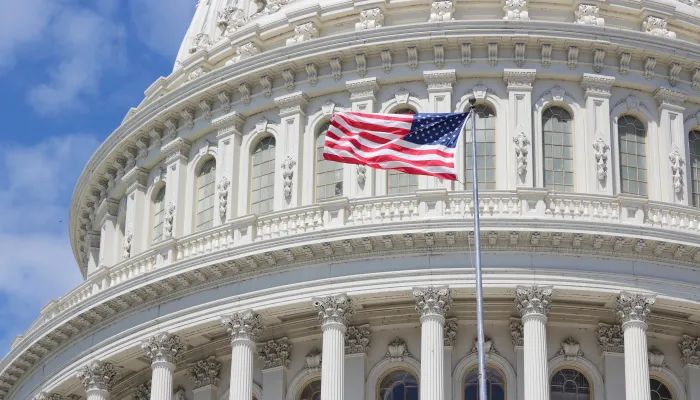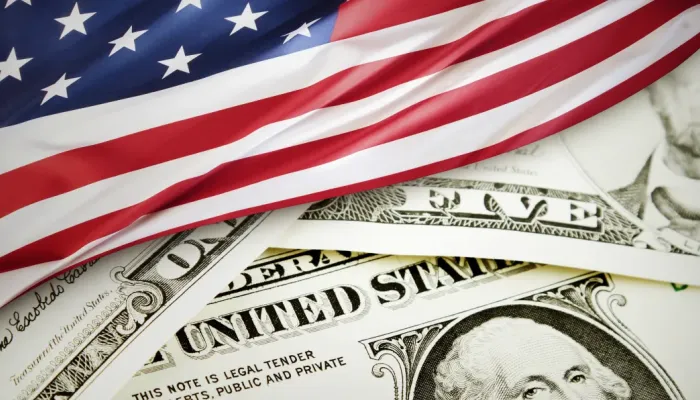Higher Treasury Yields Would Add Trillions to the Debt
The 10-year Treasury yield today is approaching 4.4 percent, over 50 basis points above the intra-day low a month ago on April 7, more than twice as high as early 2022 and 30 basis points more than economic projections. If the 10-year were to hover around 4.4 percent permanently and yields on other Treasury securities were to increase equally, it would add an extra $1.8 trillion to the debt above projections over the next decade, which is enough to counter the likely revenue gains from tariffs if they were to go into effect after the 90-day pause.
High and rising interest rates should serve as an important warning against efforts to add more to the already massive national debt – including through a $5.8 trillion reconciliation package.
While Treasury yields fell temporarily in response to the Trump Administration’s announcement of reciprocal tariffs on April 2, long-term rates surged to an intra-day high of 4.6 percent on April 11 despite a brief respite after the Administration’s announcement to pause most “reciprocal tariffs” (maintaining a 10 percent baseline tariff) and increase tariffs on China.
In general, long-term interest rates have been on the rise since September. The 10-year Treasury note has increased from 3.6 percent on September 16 to 4.4 percent currently, while the 20-year has gone from 4.0 percent to 4.8 percent over the same period. This rise has occurred despite the Federal Reserve lowering the federal funds rate by a percentage point since September, which has had the effect of reducing 3-month yields from 5.0 to 4.3 percent.
Taking the longer view, yields on both short- and long-term Treasuries had been rising since 2022. As the Federal Reserve increased interest rates to fight inflation, the yield on the 3-month Treasury bill rose from a near-zero rate throughout 2020 and 2021 to 4.4 percent by the end of 2022 and 5.4 percent by the end of 2023. Since mid-2024, rates on Treasuries have been gradually declining as the Federal Reserve cut rates. However, yields on longer-term Treasuries have remained elevated. The 10-year has risen from 0.9 percent at the end of 2020 to 3.9 percent at the end of 2023 and 4.6 percent at the end of 2024. Prior to that, yields hadn’t been this high since 2007.

The recent rise in yields is particularly troubling as it has accompanied significant reductions in stock values – typically stocks and bonds move in opposite directions so that lower stock valuations also lower yields. Higher yields indicate that investors see less security in long-term Treasuries, and while no one has a complete picture, some experts have suggested the recent turmoil could be due to concerns over persistent inflation, rising US debt, and/or reduced faith in US economic and government institutions.
Higher yields flow through to high rates on mortgages, car loans, and business loans. Rising rates also impose an increased cost to the federal government and slow economic growth.
In its current law projections, the Congressional Budget Office estimates the 10-year yield will average 4.1 percent in 2025 and fall gradually to 3.8 percent by 2031.
If 10-year yields were instead to average 4.4 percent over that period (and the yield of all other Treasuries increased by an equal amount), we estimate it would add an additional $1.8 trillion to the debt over the next decade. This roughly matches our estimate of the revenue that would be raised from reciprocal tariffs, assuming they are made permanent.
Interest payments on the debt are already projected to exceed the record 3.2 percent of Gross Domestic Product (GDP) this year and grow past $1 trillion next year.
If long-term yields were to remain at 4.4 percent and all other yields increased equally, interest costs would more than double to $2.1 trillion by 2035, approaching 5 percent of GDP. Costs would rise even further if Congress were to enact a costly reconciliation bill.

As we have discussed before, high yields can be both a cause and consequence of high debt. Higher interest rates can be a tool to attract demand for a growing supply of debt and high debt can also push interest rates higher. This can create a dangerous debt spiral. Lawmakers should be working together to address rising debt and record interest, not making it worse by proposing to add trillions more to our debt and deficits.


